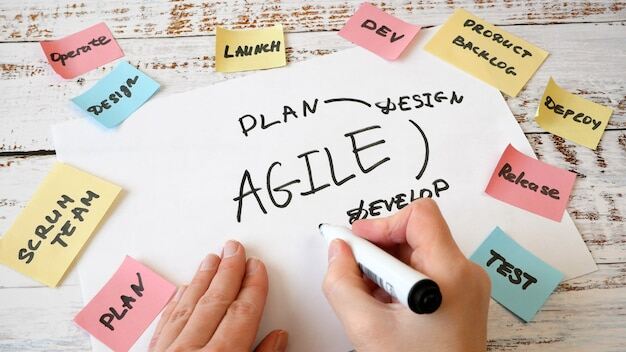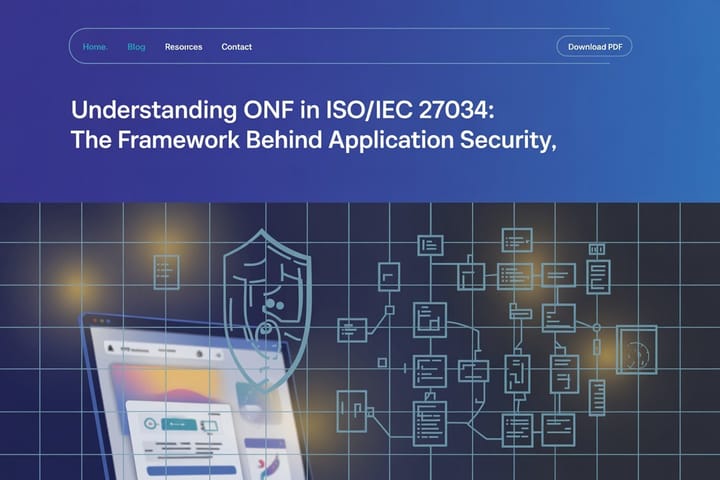Prince2 Agile vs Traditional Project Management - Course Monster Blog

Prince2 agile has made a significant impact on the fields of project management and software development. It has become a widely discussed project management methodology. Certainly, as the business landscape undergoes rapid transformations, businesses actively seek processes, strategies, and techniques to operate smoothly.
Although numerous project management approaches exist, the ultimate choice should be based on the specific nature and requirements of the business. Consequently, among the various methods available, traditional (Waterfall) and agile methodologies are frequently compared.
If you want to understand the distinctions between these two approaches and determine which one is suitable for your upcoming project, you’ve come to the right place. Consequently, we provide a comprehensive comparison of both project management methodologies.
Understanding Traditional Project Management
Traditional Project Management Conventional project management represents a well-established approach where projects follow a sequential pattern: inception, strategizing, execution, vigilant oversight, and finalization. Generally, this classical project management paradigm places emphasis on linear procedures, meticulous record-keeping, exhaustive preliminary schematics, and ranking of tasks. Furthermore, according to the traditional doctrine, the timeline and financial aspects remain dynamic, while the project requisites remain unalterable, often leading to fiscal and timeline predicaments. Generally, the standard procedural manual, PMBOK®, delineates the tools and methodologies that project overseers adhere to throughout every phase.
It’s intriguing to note that this framework also encompasses alternative methodologies such as PRINCE2, embraced by numerous entities within the United Kingdom’s public sector and notable private enterprises like Vodafone, and Siemens, among others. This model is also colloquially referred to as the “Waterfall” model.
Advantages of the Classic Methodology
- Well-defined Objectives
- Unparalleled Command
- Comprehensive Documentation
- Heightened Accountability
Exploring Prince2 Agile Management

Prince 2 Agile, a broad approach predominantly employed in software development, emphasizes collaborative teamwork, cooperative endeavors. time-constrained task allocation, and the nimbleness to swiftly adapt to evolving circumstances.
The Prince2 Agile Manifesto outlines four fundamental principles:
- Prioritizing individual and collective interactions over procedural protocols and tools.
- Giving precedence to functional software over exhaustive documentation.
- Prioritizing customer engagement over negotiation.
- Adapting to change as opposed to rigidly adhering to a predefined blueprint.
Advantages of Prince2 Agile Project Management
- Adaptable Task Prioritization
- Timely and Predictable Deliveries
- Foreseeable Budgets and Timelines
- Enhanced Quality Standards
- Enhanced Transparency
The Agile methodology adopts an iterative approach, fragmenting projects into shorter sprints. Unlike the conventional approach, Agile minimizes preliminary planning and prioritization, favoring adaptability in response to evolving specifications and alterations.
Distinguishing Between Traditional and Prince2 Agile
Below, we present a comprehensive comparison of the principal disparities between traditional and agile project methodologies:
| Characteristics | Agile Approach | Traditional Approach |
|---|---|---|
| Organizational Structure | Iterative | Linear |
| Scale of Projects | Small and Medium Scale | Large-Scale |
| User Requirements | Interactive Input | Clearly Defined Before Implementation |
| Involvement of Clients | High | Low |
| Development Model | Evolutionary Delivery | Life Cycle |
| Customer Involvement | Continuous Throughout Work | Early Engagement, Less Once Execution Begins |
| Escalation Management | Team Collaboration on Problem Resolution | Escalation to Managers for Issues |
| Model Preference | Favors Adaptation | Favors Anticipation |
| Focus (Product vs. Process) | Less Emphasis on Formal and Directive Processes | Emphasizes Processes Over Product |
| Test Documentation | Tests Planned One Sprint at a Time | Comprehensive Test Planning |
| Effort Estimation | Scrum Master Facilitates Team Estimation | Project Manager Provides Estimates, PO Approval |
| Reviews and Approvals | After Each Iteration | Excessive Leader Reviews and Approvals |
These distinctions underscore the contrasting principles and practices of traditional and agile project methodologies, each tailored to specific project scopes and objectives.
Why Prince2 Agile is Preferred Over Traditional Project Management
Many developers and project managers opt for the agile methodology for a variety of compelling reasons, some of which are discussed below:
1. Prince2 Agile Offers Enhanced Flexibility:
Agile methodology surpasses the traditional waterfall approach regarding adaptability. When the need arises to experiment or diverge from the initial plan, the agile approach readily accommodates such changes. Notably, it places a stronger focus on the product’s evolution rather than adhering rigidly to a predetermined structure. Unlike the traditional approach, agile isn’t linear and does not follow a top-down hierarchy, enabling seamless integration of last-minute alterations without disrupting project schedules.
2. Prince2 Agile Offers Increased Transparency:
Prince2 Agile methodology fosters a culture of transparency. Clients and decision-makers actively participate in project initiation, planning, reviews, and testing. In contrast, the traditional approach centralizes decision-making authority with the project manager, limiting the involvement of others. Agile empowers team members to track progress from project inception to completion, promoting a healthier work environment.
3. Prince2 Agile Offers Ownership and Accountability:
One stark difference between these two project management approaches lies in the degree of ownership and accountability they afford to team members. In traditional project management, the project manager bears sole responsibility, while customer involvement typically ceases once execution commences. In contrast, agile methodology distributes ownership across every team member. Each actively contributes to completing the sprint within estimated timelines. Unlike traditional project management, everyone involved in the project can easily monitor progress from start to finish.
4. Prince2 Agile Offers Constructive Feedback:
Traditional project management rigidly defines and plans each process from the project’s outset. Any substantial changes or feedback that could extend the project timeline are often disregarded. In contrast, agile management welcomes continuous feedback, enhancing the quality of output. Agile’s receptivity to feedback makes it the preferred choice for many project managers and software developers. It enables them to promptly respond to customer requests, with customers validating each iteration to deliver a high-quality product or service within the stipulated timeframe.
5. Prince2 Agile Offers Handling Complexity:
Traditional project management is primarily suited for small or less intricate projects due to its linear nature. As mentioned earlier, it resists abrupt changes, as they can set the project back significantly. Agile, on the other hand, excels in managing large and complex projects. Whether a project comprises multiple interconnected phases or relies on various interdependent stages, agile proves a better fit for handling complexity.
Want to learn more? Visit our courses on agile now, and make a difference.
Choosing the Right Project Management Methodology

Selecting the appropriate project management methodology is a crucial decision, and there is no universal approach that fits every project or organization. Similarly, the choice of methodology depends on several key factors, including the project’s nature, size, available resources, and more. Here are some considerations to help you determine the most suitable methodology for your project:
1. Project Requirements:
On one hand, start by evaluating the clarity of your project requirements. If the requirements are ambiguous or likely to change, the agile methodology is often the better choice. On the other hand, if the conditions are well-defined and understood from the outset, the traditional method may be more appropriate.
2. Technology:
Consider the technology involved in your project. The traditional project management methodology is well-suited when no new technology or tools are introduced. Since Agile methods provide greater flexibility for experimenting with new technology, making them a better fit for projects with evolving tech components.
3. Risk Management:
Assess the project’s susceptibility to risks and threats. Still, given the traditional methodology’s rigidity, it may not be advisable for projects prone to unexpected risks. Certainly, Agile, with its adaptability, allows for quicker risk mitigation and is a preferable choice for effective risk management.
4. Resource Availability:
The size and composition of your project team matter. While the traditional approach is suitable for larger and more complex teams and projects, whereas agile teams typically comprise fewer experienced members.
5. Criticality of the End Product:
Consider the criticality of the final product of the chosen project management methodology. Whereas, Traditional methods, with their focus on documentation, are well-suited for projects with critical end products, as they ensure comprehensive records and adherence to established processes. In contrast, the agile project management methodology, with its flexibility and then emphasis on iterative development, may be more suitable for less critical products.
The team presented the new project proposal to the executive committee, seeking approval for its implementation and funding allocation. By carefully assessing these factors and aligning them with the project’s specific needs and objectives, you can make an informed choice that sets the project up for success. Still, a flexible and adaptive approach may be necessary if the project’s circumstances change over time.
Overall, Prince2 agile project managers have an impact and will undeniably only grow to be more in demand. Visit all our courses on Agile here, and get certified.
Here at CourseMonster, we know how hard it may be to find the right time and funds for training. We provide effective training programs that enable you to select the training option that best meets the demands of your company.
For more information, please get in touch with one of our course advisers today or contact us at training@coursemonster.com




Comments ()